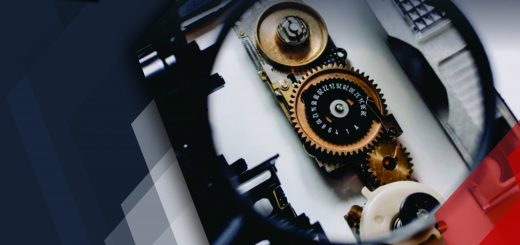How are Patents Valuable?
How are Patents Valuable? USPTO grants protection in terms of patent to the inventor of any invention, by stating rights that restricts every other person from using, selling, or taking any other sort of advantage from the invention, without the inventor’s consent, only for a fixed time period. The inventor has every right to sell the patent, license it, or use it in any way possible.
There are certain criteria which must be fulfilled while applying an invention for patent protection. It is important to note that patents are not granted if the invention is one of the laws of the nature, any natural phenomenon, or any abstract ideas. The patent is applied and granted if the invention is completely new (there is no public disclosure of its presence) and is related to any sort of machines, human-made product, or any processing methods. Not only this, the patent must also follow some prerequisite conditions, such as novelty, non-obviousness, clarity, and must possess some industrial applicability with respect to the governing laws of that territory.
Why acquiring a patent is too complex, yet worthy? How are Patents Valuable?
In this article, we will go briefly through phases of acquiring a patent and the related benefits, which makes it so valuable and worthy.
Phase 1: Idea behind patent
It is difficult to invent something completely new in this 21st century, where everything seems to develop at its best level. And even if the idea behind any new work seems to become an invention, the second difficult thing is to get it patented. The process begins with a wide ranging patent search that aims to find out whether the invention is truly innovative or not. Once if the search gets completed, the patent appears to be completely new and none of its existence is seen in the prior art, the patent can be filled and now it’s time for the patent examination. There are two ways in which patent can be filled, namely provisional (preliminary patent application which is not mandatory to file, that includes the filing of the functionalities of the patent, with minimum of one claim) and non-provisional (which includes filing the complete functionalities, along with all the claims made, and it is generally filled after 12 months of filing provisional application) application. It incurs basic filing fees that may vary from one territory to another.
Phase 2: Patent Examination
In the patent examination, the invention and its presentation must satisfy the patent laws of that territorial area, along with its basic perquisite conditions. The conditions even include the presentation of the invention according to the standards mention in the laws, such as the quality of drawings submitted, the type of sheet that must be used, the clarity in description, complete labeling, etc. The patent examiner checks for every minute detail while going through all the prior art and elements of the patent application. Once everything seems correct the patent examiner passes the application further and grants patent.
This whole process of patent filing and examination takes around a year and sometimes more, that may or may not prove successful in grabbing the patent for the invention. Generally, very less patent application gets passed through all the steps and get the patent. Since the process is too lengthy and complicated and thus most of the applications get rejected during the search phase, while some get rejected or asked to make corrections during the examination process.
External Support For 1st and 2nd phase
To understand the laws related to patent process and frame the application according to the patent standards, the inventor’s often hire professional attorneys to help them to create a good quality and descriptive patent application, which adds on to their expense with the hiring fees according to patent requirements, along with basic fees of filing the application in the patent office.
Exclusive rights for patent
But, there is a point to realize that all of these efforts which are made by the inventor, in terms of both economic and time-concerned are not only made for desiring a patent, just for the name sake. Instead patent offers a number of privileges to the inventor, because of which only the inventor gets ready to make such investments. Here is a list of exclusive privileges and benefits which comes into full control and authority of the patent owner or the inventor, after getting the patent for his/her invention.
- Securing all the rights by early filing the invention: Not just complete patent, even the first step of patent registration i.e. patent filing offers a remarkable advantage to the inventor. Once the application is filed as provisional application, which is a lot cheaper and short to summarize, then the inventor is provided with a security and surety that no other person could claim the same invention under the filing period of 12 months, after which non-provisional application has to be filed with complete claims and description. If any other person, business, or organization tries to claim the invention as theirs, then their request is simply rejected for the filing period.
- Privilege authorities and freedom of movement: Once a patent is granted, it provides the inventor, the complete right to work or do anything with his invention for the valid time period (20 years), which may vary from one area to another. Within this allotted time period, no person, business, or an organization is allowed to use, sell, or make any modifications to the original invention without the inventor’s consent. If anyone tries to use it, then he/she will be considered as the unauthorized party and will be considered as a case of infringement, which is a criminal offense. Having a complete protection on the back, the inventor can do anything with the invention, and thus proclaims to be the utter owner of that invention, restricting any unauthorized access to it.
- Produce significant investment returns: There are still chances if the inventor gets bored about his/her invention, or do not see any future scope on his/her side, or want to hand it over to a more successful or deserving being, then he/she can commercialize the invention, keeping its exclusive rights and earning good amount of investment returns from it.
- Earn profits from licensing or selling the invention: – There are chances that the inventor might want to sell or license the patent due to any reason, such as to earn significant profits then there is a provision for that too. He/ she may commercialize or license it to another firm who could offer him good amount of money.
- Securing good market position: By disclosing the invention in public domain openly, itself signifies that the inventor holds the guts to get challenged for his/her own work, to attain a good public impression and enhance his/her portfolio. His image in the market would sell or instigate other competitors to offer this invention with good range, thus this helps in building up his own negotiating power for his/her own invention. This can even help in building a good relationship between competitor firms that will ultimately encourage small firms to participate in this industry as well.
- Serving for public knowledge enhancement: – Public disclosure not only builds the inventor’s portfolio, but it also raises company’s funds, market value, and relevant business partners. Thus disclosing the invention in public will also demonstrate the inventor’s good command and specialization over the technical subject background. This will attract leading and high-end business partners, investors and shareholders for future knowledge transfer and commercial support.
- Produces individual benefits: Acquiring a patent does not only involves the inventor, but it also involves a number of supportive people that plays significant role during the course of patenting. For example, patent attorneys can grow on financial and individual skill level by helping and providing their exclusive services to the inventors, patent examiners gets a platform to show up their knowledge and skills in the patent office during investigation of patent applications, business oriented people gets new arena of development and scope to invest more in a variety of new subject matters, etc.
Intangible assets are those important belongings for any person, business, or an organization, that does not exist physically in nature. For example, all the trademarks, copyrights, business methods, patents, etc. all fall into this category. Since the patent is an asset that is acquired for someone’s invention and its merely impossible to measure the amount of hard work and other investments, such as time, money, etc. from the inventor’s side, patent comes under this category. And it is unfair to assign any monetary amount for someone’s efforts, by simply analyzing the type of patent subject.
But, there is a method, called ‘economic-analysis’ method, through which we could analyze all those factors on the basis of three parameters, namely cost , income, and market, and calculate the monetary value of the invention. The cost approach focuses on the replacement cost of the patent, which would replace the protection right. The income approach focuses on current cash value that the invention could cause after raising the sales and standards in the market. The market approach focuses on analyzing the cost that a potential buyer can easily pay for similar kind of property, method, or product.
Is getting a Patent, a fair stand?
After going through the above parts one can conclude that if an inventor tries to acquire a patent then he/she must be very sure about his/her invention. Since it not only requires a lot of investment in terms of time and money, but it also requires fair enough knowledge about the market scenarios, patent laws, and its competitors. It does not serve as an open challenge just for the name sake, but the inventor have to literally get over every step and have to remember the strict deadlines, and constantly keep tracks for all the documents as well as the patent legal standards.
It takes a lot of time to process one application and to pass it successfully offering inventor with all the above mentioned benefits.
Thus, getting a patent is a tough job but it is worthy to earn something in your name for a registered time period. Our team at Sagacious IP, provides our clients with all prominent services that suits their budget and meet all the desired requirements, successfully meeting the time constraints.
To know more about our services and how we work, please don’t hesitate to contact us through or registered website, https://sagaciousresearch.com/. All of your queries and suggestions will be answered within 4 business days.




